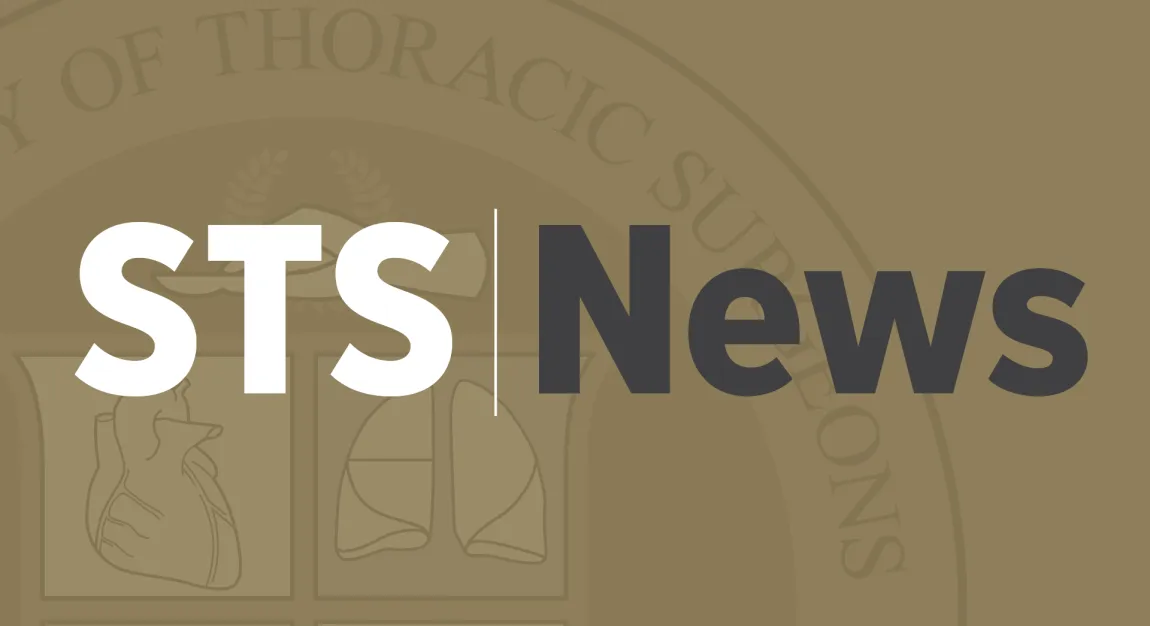STS News, Fall 2022 — Whether they were called to the specialty by heritage or by destiny, these parent-child duos represent the evolving arena of cardiothoracic surgery in real time.
Surender Reddy Neravetla, MD, and Soumya Reddy Neravetla, MD
At Springfield Regional Medical Center in Ohio, Surender Reddy Neravetla, MD, has earned accolades for his more than 10,000 valve repairs, beating-heart surgeries, and minimally invasive lung resections, as well as a most distinctive trophy: King of Dad Jokes.
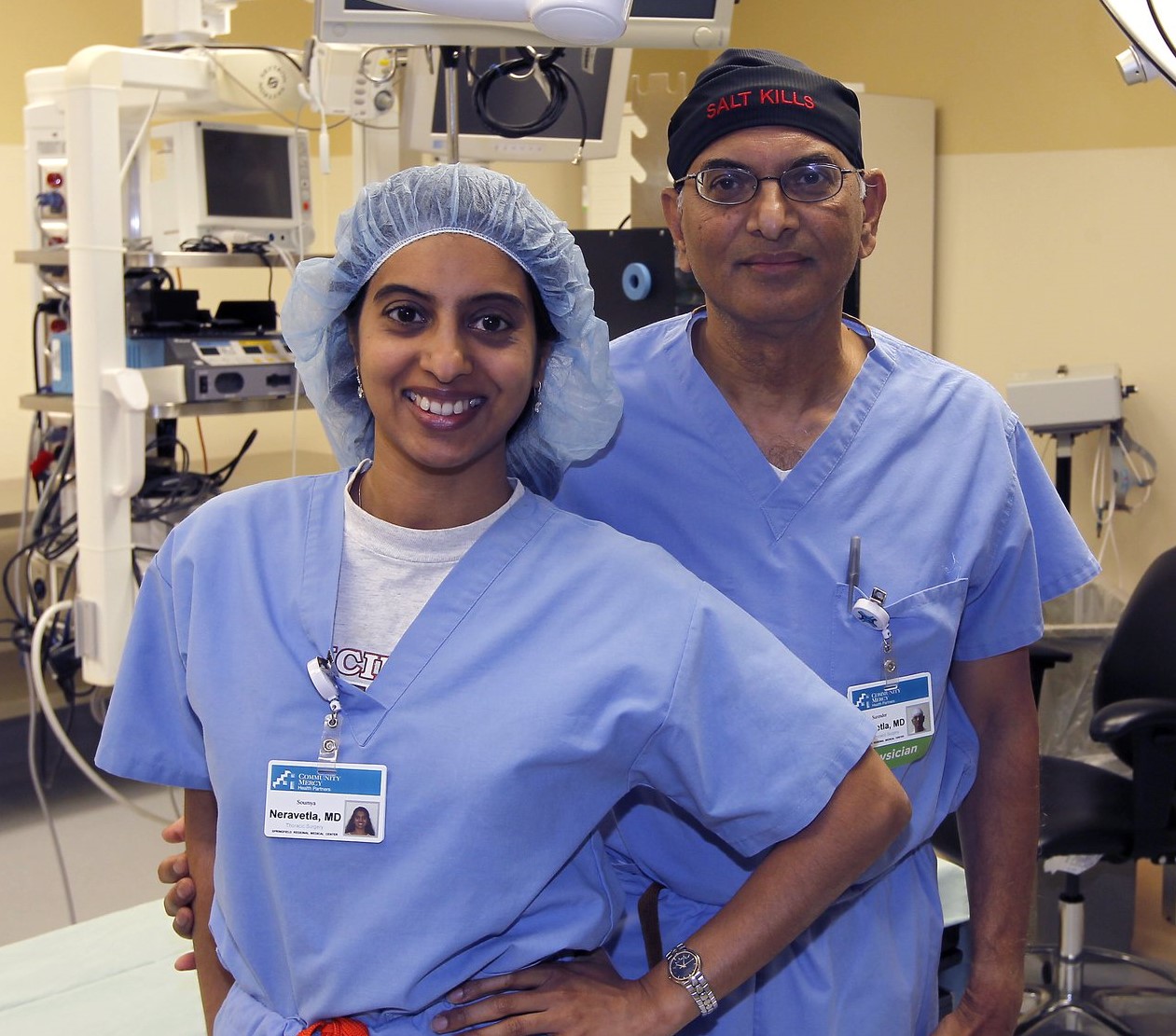
Despite Dr. Neravetla encouraging his daughter, Soumya Reddy Neravetla, MD, to try out different career paths, Soumya found herself gravitating time and again toward cardiothoracic surgery. And when veteran surgeon Lofton N. Misick, MD, left the Springfield center for a position in Texas in 2016, Soumya stepped in to take on some of the workload. The plan was to stay “for a little while.”
She’s still there. “I’ve been busy!” she said. “Launched a TAVR program and a lung screening program in Springfield. Met with the governor of Ohio about lung cancer. Served in multiple board positions with the Association of Physicians of Indian Origin (AAPI), Association of Telugu Medical Graduates of USA.” She served as president of AAPI’s physician’s section from 2021–2022, and she is currently the chair of the hospital’s Cancer Committee and Department of Surgery.
The Drs. Neravetla may be the first father-daughter cardiothoracic surgeon pair to have operated as a team. Soumya referred to heart transplant pioneers, the late Norman E. Shumway, MD, PhD, and his daughter Sara J. Shumway, MD, who now serves as professor and vice chief of cardiothoracic surgery at the University of Minnesota Medical School in Minneapolis. “It’s my understanding that the Shumways never worked together, but I believe she’s the first daughter to follow her young father in this path. Dr. (Vinod) Thourani once pointed out to me that we may be the first father-daughter duo to actually work together,” Soumya said.
Clearly, a passion for preventative medicine and public health also runs in the family. The senior Dr. Neravetla is a longtime champion of bringing health education to underserved communities. He’s the author of the 2012 book Salt Kills and its 2014 follow-up, Salt: Black America’s Silent Killer, and he maintains a public blog on prevention issues, explaining current medical literature in plain language.
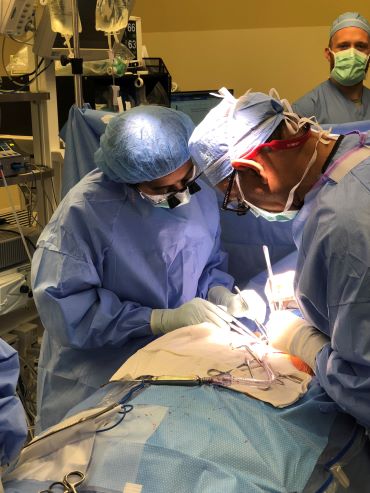
Dr. Soumya Neravetla says that she and her father are both calm but fun to work with in the OR. “My father, however, is the king of dad jokes—he has a trophy to prove it—resulting in my appropriate eye rolls.”
A grassroots advocate for the American Heart Association’s positions on disease prevention, Dr. Surender Neravetla works with local health fairs and culture festivals, churches and social clubs, schools and city halls, lecturing and initiating vital conversations with the community.
“Cardiac surgery is going through a tough transition, largely due to the rapid growth of technology,” the senior Dr. Neravetla said. “The patients under our care are at a later stage in the disease process; the surgeries and post-op care are increasingly complex. All the while, cardiac surgeons are facing increasing scrutiny. This poses significant difficulty for the younger surgeons—especially women—to get established and be respected in their field.”
Dr. Soumya Neravetla says that she was surprised at just how deep the disparities run. “Even though you know about it, it’s still surprising to see how dramatic the difference is for female surgeons in the real world.”
She’s also startled by the lack of awareness surrounding lung cancer, despite it being the number one cancer killer in men and women.
While she and her dad are both relatively quick-handed, “my father is one of the fastest surgeons you’ll ever see,” said Soumya. “On the other hand, I’m known for my small incisions, and though we both do a broad range of open and robotic surgeries, the endovascular space is my playground.”
As she monitors technologies in cardiac, vascular, and thoracic applications, Dr. Soumya Neravetla spearheads lung cancer screening and awareness in Dayton, serving on the Ohio Partners for Cancer Control lung committee. Her team also is preparing to launch another TAVR program at Kettering Health Dayton in Ohio.
“It’s always exciting to develop a program from infancy and watch it mature,” she said.
Undoubtedly, her dad feels that, to a superb degree, about his daughter.
Richard M. Engelman, MD, and Daniel T. Engelman, MD
In 1968, when Richard M. Engelman, MD, was a resident at New York University, coronary artery bypass grafting (CABG) was in its infancy. Patients remained intubated for at least a day, were on mandatory bedrest for a minimum of 48 hours, and didn’t begin rehabilitation—which involved only limited ambulation—until 72 hours later.
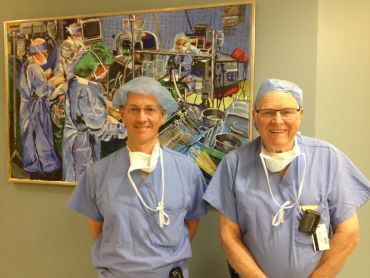
The senior Dr. Engelman (right) pioneered “Fast-Track” recovery after surgery, and his son Daniel continued to advance perioperative care through the ERAS Cardiac Society.
“Discharge was routinely 1 to 2 weeks after surgery, and patients were encouraged to remain sedentary for the next 4 to 6 weeks,” Dr. Engelman said. “These practices remained the standard for cardiac surgical perioperative care for decades, and morbidity following surgery was not inconsequential.”
With increased evidence supporting the success of mindful perioperative care, Dr. Engelman formed a team to introduce the “Fast-Track” approach to cardiac recovery in the early 1990s. This method involved a coordinator-led multidisciplinary team, who paid close attention to intravenous fluid intake, controlling atrial arrythmias, normalizing gut function, and getting patients quickly up and walking.
Fast-Track dramatically reduced extubation times, ICU stays, and overall time in the hospital, all with improved outcomes for the patient.
Richard’s son, Daniel T. Engelman, MD, picked up the torch in 1999, when he became a Board-certified surgeon after graduating from Brigham and Women’s Hospital in Boston, Massachusetts.
“As my career progressed, I noticed waning interest in the Fast-Track protocols popularized by my father, coincident with increasing provider concern about patient-reported outcomes and the costs associated with care,” the younger Dr. Engelman said.
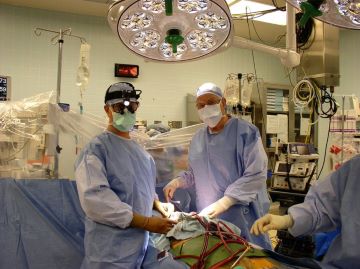
Changes in cardiac and surgical training and practice patterns—as well as improvements in percutaneous techniques—led to increased emphasis on reducing delays between patient evaluation and surgical procedures, explained Dr. Daniel Engelman. “Perioperative optimization was at odds with this new urgency.”
Enter enhanced recovery after surgery (ERAS). After examining the successful outcomes surgeons and patients were enjoying in other specialties, Dr. Engelman put it to use within cardiac surgery. In 2017, he and a group of likeminded surgeons founded the nonprofit ERAS Cardiac Society.
“The national and international interest was tremendous,” he said. “A few early studies were simultaneously being conducted outlining enhanced recovery protocols demonstrating improved outcomes within our specialty. What was old was new again.”
Both Drs. Engelman served as authors of the 2019 Guidelines for Perioperative Care in Cardiac Surgery, which are the first of their kind. They’ve been downloaded more than 260,000 times.
“The field continues to evolve throughout the years in ways we couldn’t even imagine when I started my career, and I’m thrilled to be able to witness it through Dan’s achievements,” said the elder Dr. Engelman.
Meanwhile, although he’s retired from operating, he continues to work each day at Baystate Medical Center in Springfield, Massachusetts, as chief of cardiac surgical research. “I also continue to enjoy time with my wife, Jane, of 62 years, and spend time on the golf course with kids and grandkids!”
If you know of a unique member experience that should be featured in STS News, contact stsnews@sts.org.
